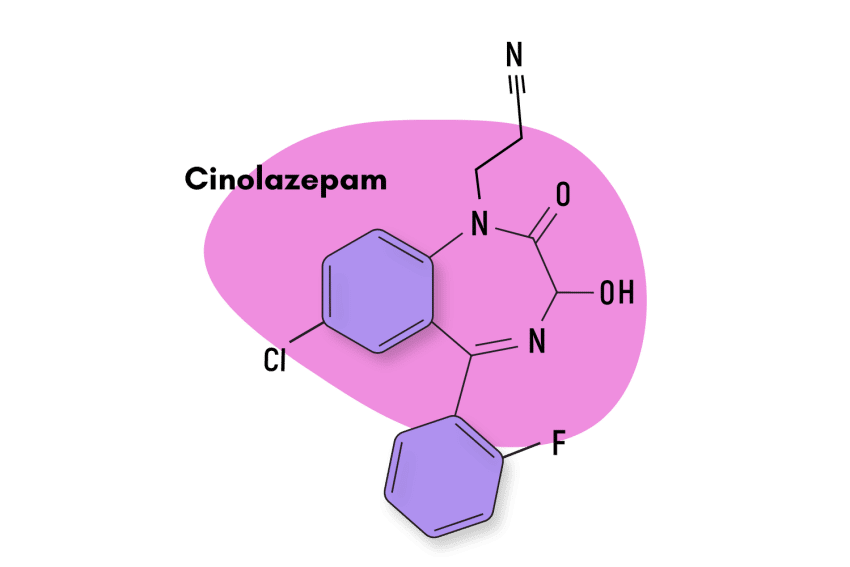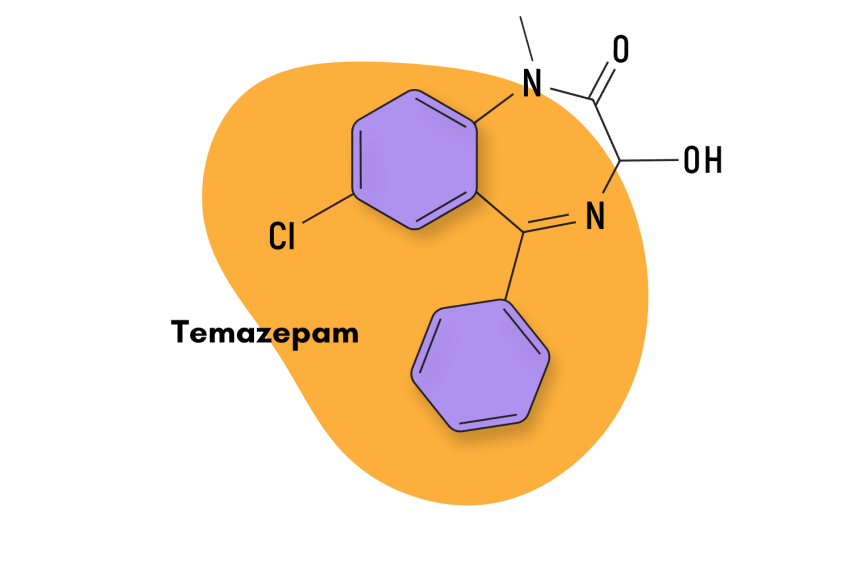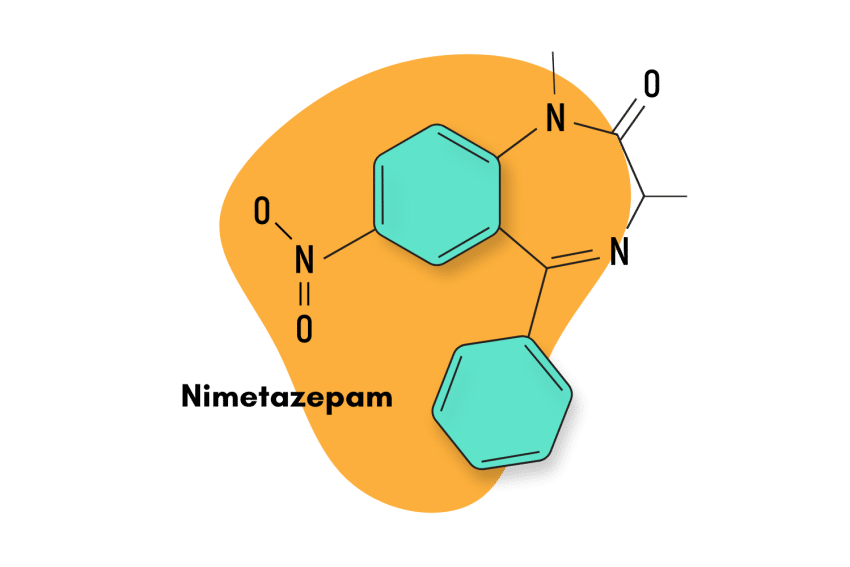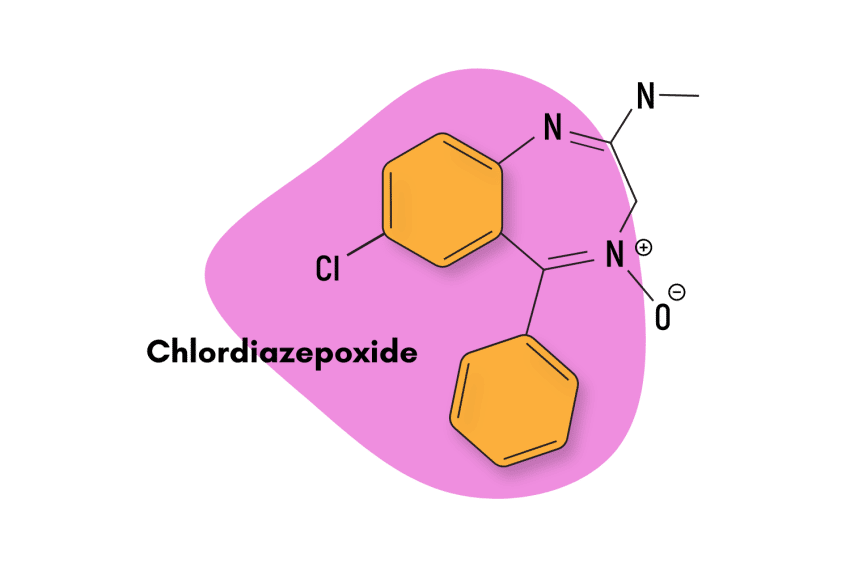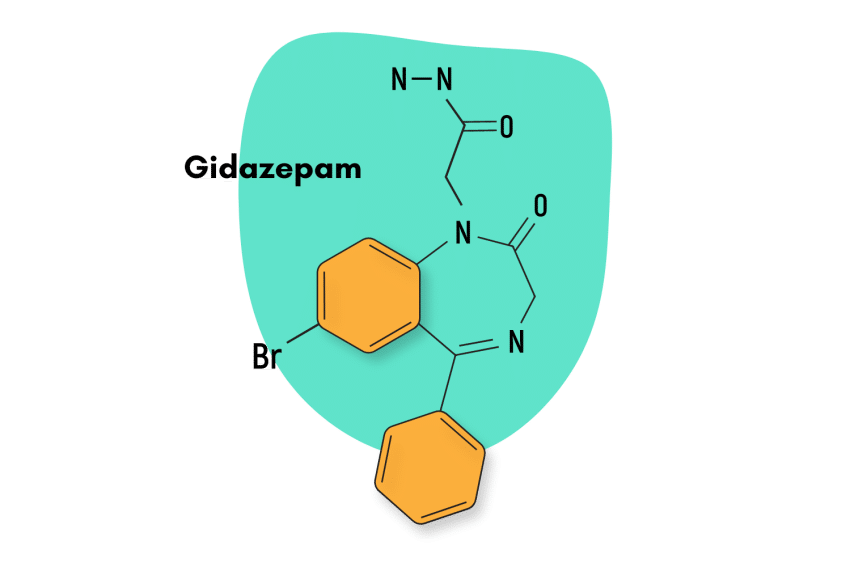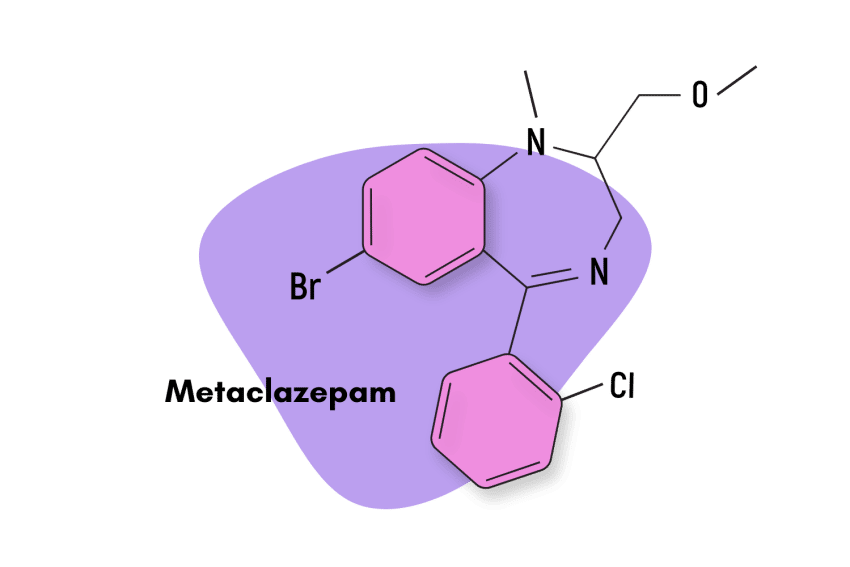Flunitrazepam (Rohypnol) Fact Sheet & Harm Reduction Guide
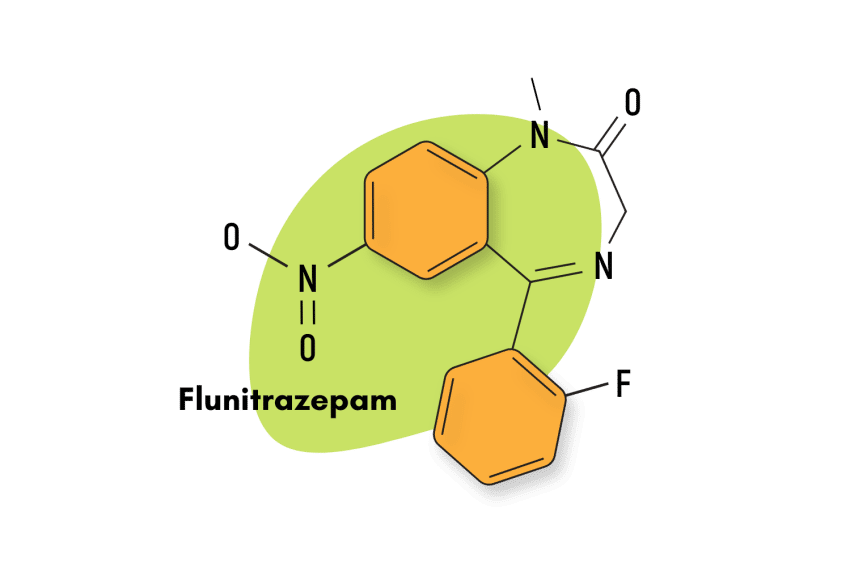
Flunitrazepam — also known as Rohypnol and its street name “roofies” — is a benzodiazepine compound of the triazolobenzodiazepine class — a subgroup known for its exceptionally high potency.
Regarding chemical structure, flunitrazepam is a 1,4-benzodiazepine, a C-nitro compound, and a member of the monoflourobenze class when benzene carries a single fluoro substituent. In simpler terms, flunitrazepam is nitrazepam with a fluoro group at position two and a methyl group at position one.
Generally, the addition of a fluoride group causes drugs to increase potency. This appears to hold true in the case of flunitrazepam; the drug is of higher potency than its progenitor, nitrazepam, and it is approximately ten times as potent as diazepam (AKA Valium) [1].
Unfortunately, the effects of flunitrazepam, mainly its ability to interfere in the formation of memories, make it a prime candidate for use as a date rape drug. For this reason, flunitrazepam is of much greater concern to authorities, and its use is highly curtailed compared to other benzodiazepines.
Flunitrazepam Specs
| Status | Approved Medication |
| Common Dosage | 1-2 mg |
| PubChem ID | 3380 |
| CAS# | 1622-62-4 |
IUPAC Name
5-(2-fluorophenyl)-1-methyl-7-nitro-3H-1,4-benzodiazepine-2-one
Other Names
Rohypnol, Roofies (street name)
Metabolism
The liver metabolizes flunitrazepam into 7-aminoflunitrazepam (major metabolite), desmethyl-flunitrazepam, and 3-hydroxyflunitrazepam (minor metabolites). These compounds are pharmacologically active.
Duration of Effects
Flunitrazepam is a long to intermediate-acting benzodiazepine. It has an elimination half-life of 15-35 hours, while its estimated duration of effects ranges from 8-12 hours.
Benzodiazepine Dosage Equivalency Calculator
**Caution:** Benzodiazepines have a narrow therapeutic window. Dose equivalents may not be accurate in higher doses.
This calculator does not substitute for clinical experience and is meant to serve only as a reference for determining oral benzodiazepine equivalence.
Please consult a medical practitioner before taking benzodiazepines.
How Does Flunitrazepam (Rohypnol) Work?
Flunitrazepam is a GABA-A agonist. It potentiates the natural inhibitory effect of the neurotransmitter GABA in the central nervous system. This produces a generalized depressive, sedative, anxiolytic, and muscle-relaxant effect [2].
The different affinity of benzodiazepines to specific GABA-A receptors and other individual characteristics like pharmacokinetics and bioavailability can alter their effect profiles [3].
One important particularity of flunitrazepam is its affinity for the GABA-A α5 subunit. The α5 subunit, predominant in the hippocampus, is comparatively rare, accounting for less than 5% of all GABA-A receptors [4]. The hippocampus is highly involved in learning and memory. Compounds with a high affinity for this receptor (like alcohol, for example) tend to cause amnesia as a side effect.
Flunitrazepam is also fast-acting, and due to the presence of a nitro group and a fluorine atom in its molecular structure, it’s known that its hypnotic effects are much greater than its sedative, anxiolytics and muscle-relaxing properties [5]. However, like all benzodiazepines, it still has the classic range of associated effects. Also, as a member of the triazolobenzodiazepine class, flunitrazepam is a high-potency compound.
Regarding pharmacokinetics, flunitrazepam is almost completely absorbed (80 to 90%) in the gastrointestinal tract and is 80% bound to plasma proteins. Rapid redistribution from the central plasma compartment to tissue compartments explains the discrepancy between the half-life of the drug and the duration of its clinical effects, with the former being much longer than the latter [2].
Flunitrazepam produces several metabolites, some of which are pharmacologically active and influence the drug’s clinical effects. For example, the presence of a “hang-over” effect.
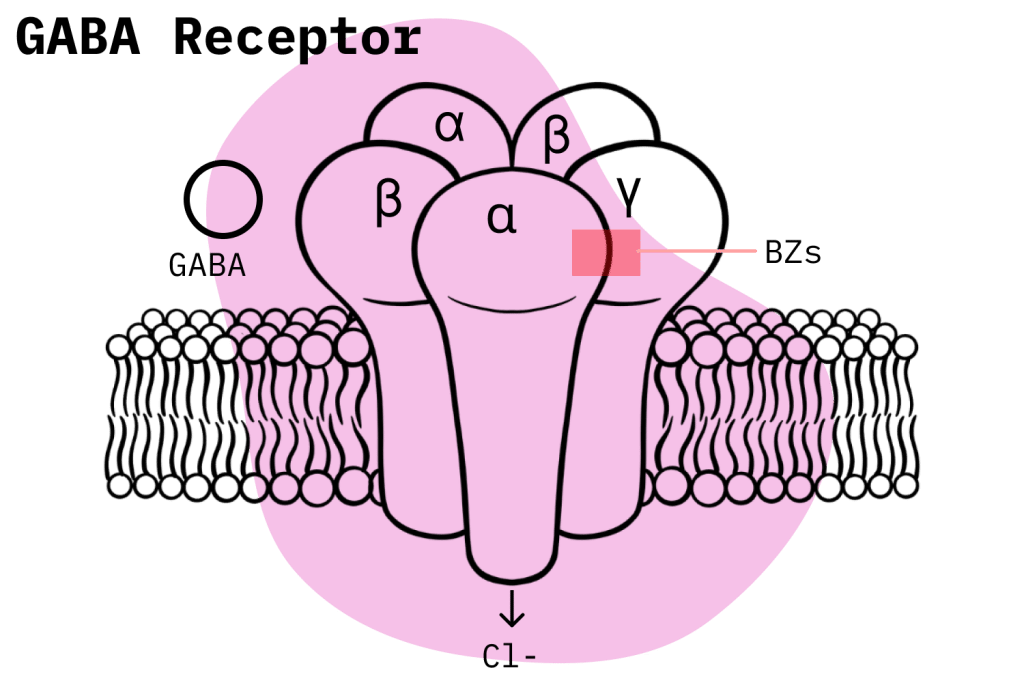
Is Flunitrazepam Safe? Risks & Side Effects
Being classified as a Schedule III compound under the Controlled Substances Act, flunitrazepam is one of the few benzodiazepine medications not listed under Schedule IV. According to the DEA, the difference in classification means that compared to other benzodiazepines, flunitrazepam is more liable to cause misuse and engender physical dependence.
However, it’s likely that flunitrazepam does not have a more significant abuse potential than other high-potency benzodiazepines like alprazolam and lorazepam, classified as Schedule IV. Instead, flunitrazepam’s classification is likely due to the pharmacological particularities that have led it to become a widely used date rape drug and the need to further curtail access to it to prevent sexual assault.
Still, there are certain characteristics related to flunitrazepam that make it quite dangerous. For instance, all benzodiazepines have been found to induce a certain level of respiratory depression. Still, with flunitrazepam, even very small quantities of the drug have been found to produce this effect, further augmented by the use of simultaneously administered analgesics or hypnotics [2].
Side Effects of Flunitrazepam
When used as a hypnotic, flunitrazepam’s most common side effect is a residual effect in the morning after ingestion.
Other side effects have been identified with flunitrazepam use, including [6]:
- Aggression
- Amnesia (blackout)
- Confusion
- Drowsiness
- Excitability
- Headaches
- Impaired reaction time and motor coordination
- Impaired mental functioning and judgment
- Sedation
- Sleep
- Slowed breathing and heart rate
- Slurred speech

Benzodiazepine Withdrawal & Dependence
The development of physical and/or mental dependence, as well as withdrawal symptoms stemming from benzodiazepine use, is not an uncommon occurrence. This is a serious cause for concern as, in the medication community, it is common knowledge that only benzodiazepines and alcohol can cause death due to withdrawal symptoms.
To hedge against this possibility, it is standard practice for doctors to prescribe benzodiazepine treatment for the shortest time frame possible, usually four weeks. However, it’s imperative for users to be aware that even if they have a short treatment span and engage in no misuse, the chance of developing a benzodiazepine dependence is considerable.
For example, one study which attempted to ascertain the likelihood of benzodiazepine dependence looked at a group of patients who used them for more than four weeks. The study found that over one-third of participants developed withdrawal symptoms upon cessation [7].
When assessing the risk of individual benzodiazepines, individual factors such as potency, duration of effects, and metabolic byproducts are relevant because they can affect the drug’s misuse potential and the probability that it will cause physical dependence.

Harm Reduction: Flunitrazepam
In this article, we want to provide unambiguous harm-reduction strategies to all types of benzodiazepine users. We’ll start by listing some common tactics that provide the best guidelines to stay safe.
When dealing with prescription drugs, the first step should always be the consideration of alternative methods of treatment. It is very common for users to rush into a pharmacological treatment before considering other options. While they’re usually not as potent, plant-based medications can offer effective relief while offering a much safer side effects profile. When combined with behavior-related solutions like exercise or therapy, natural compounds have a great chance of becoming effective treatments.
However, if a user is determined to go ahead with a pharmacological option, then they should at least keep specific rules in mind. First, they should assess their capability to use the drug without misuse. If they have a history of drug or alcohol abuse, for instance, then they should know it is likely that they will abuse their chosen prescription drug. Additionally, users should know that the longer a drug is used, the likelier it will cause physical dependence.
Most serious health events are related to misuse, but regarding recreational users, this knowledge is of little consequence. If a user plans to engage in recreational misuse, they should engage in common harm-reduction tactics to at least reduce the risk. One of the most effective strategies is to procure and learn how to use the compound flumazenil, which works to revert the effect of benzodiazepine overdoses via its antagonist properties on GABA-A receptors.
Benzodiazepine Harm Reduction Tips
- 🥣 Don’t mix — Mixing benzodiazepines with other depressants (alcohol, GHB, phenibut, barbiturates, opiates) can be fatal.
- ⏳ Take frequent breaks or plan for a short treatment span — Benzodiazepines can form dependence quickly, so it’s important to stop using the drug periodically.
- 🥄 Always stick to the proper dose — The dosage of benzos can vary substantially. Some drugs require 20 or 30 mg; others can be fatal in doses as low as 3 mg.
- 💊 Be aware of contraindications — Benzodiazepines are significantly more dangerous in older people or those with certain medical conditions.
- 🧪 Test your drugs — If ordering benzos from unregistered vendors (online or street vendors), order a benzo test kit to ensure your pills contain what you think they do.
- 💉 Never snort or inject benzos — Not only does this provide no advantage, but it’s also extremely dangerous. Benzos should be taken orally.
- 🌧 Recognize the signs of addiction — Early warning signs are feeling like you’re not “yourself” without the drug or hiding your habits from loved ones.
- ⚖️ Understand the laws where you live — In most parts of the world, benzodiazepines are only considered legal if given a prescription by a medical doctor.
- 📞 Know where to go if you need help — Help is available for benzodiazepine addiction; you just have to ask for it. Look up “addiction hotline” for more information where you live. (USA: 1-800-662-4357; Canada: 1-866-585-0445; UK: 0300-999-1212).
Harmful Interactions to Avoid With Flunitrazepam
As a drug that exerts a depressive effect on the CNS, benzodiazepine users should be aware of the deadly effects of concomitant CNS depressant use. Recent years have proved how dangerous this combination is, as it is the leading cause of death among opioid overdoses.
Additionally, users should also attempt to avoid CYP drug interactions. Flunitrazepam is one of the benzodiazepines which uses CYP enzymes in its metabolic process and, as such, drugs that either induce or inhibit the CYP3A4 or CYP2C19 enzyme can affect the clearance of flunitrazepam [8]
This interference can cause the drug to build up in the body over time, which raises the probability of adverse effects, or it can induce the process, which causes the drug to be eliminated from the system faster and thus decreases the effectiveness of treatment.

Contraindications For Flunitrazepam
The contraindications listed for flunitrazepam include [2]:
- Hepatic impairment
- Myasthenia gravis
- Older age groups (a decrease of dosage is necessary)
- Pregnancy
- Psychiatric disorders
Flunitrazepam Dosage
The usual dose of flunitrazepam as a sleep-inducing agent is 2 mg (1 mg in older patients). As a premedication on the night before the operation, 2 mg is used. Then, 1.5 to 2 mg intramuscularly for adult patients two to three hours before anesthesia is recommended [2].
Similar Benzodiazepines
Flunitrazepam has certain characteristics that make it comparable to popular benzodiazepines such as diazepam, but it also has analogs that belong to lesser-known benzodiazepine types.
Diazepam
Regarding its pharmacological particularities, such as its high affinity for hypnotic effects, flunitrazepam is often compared to diazepam (Valium). However, these compounds differ considerably in other areas, like potency and duration of effects, for example.
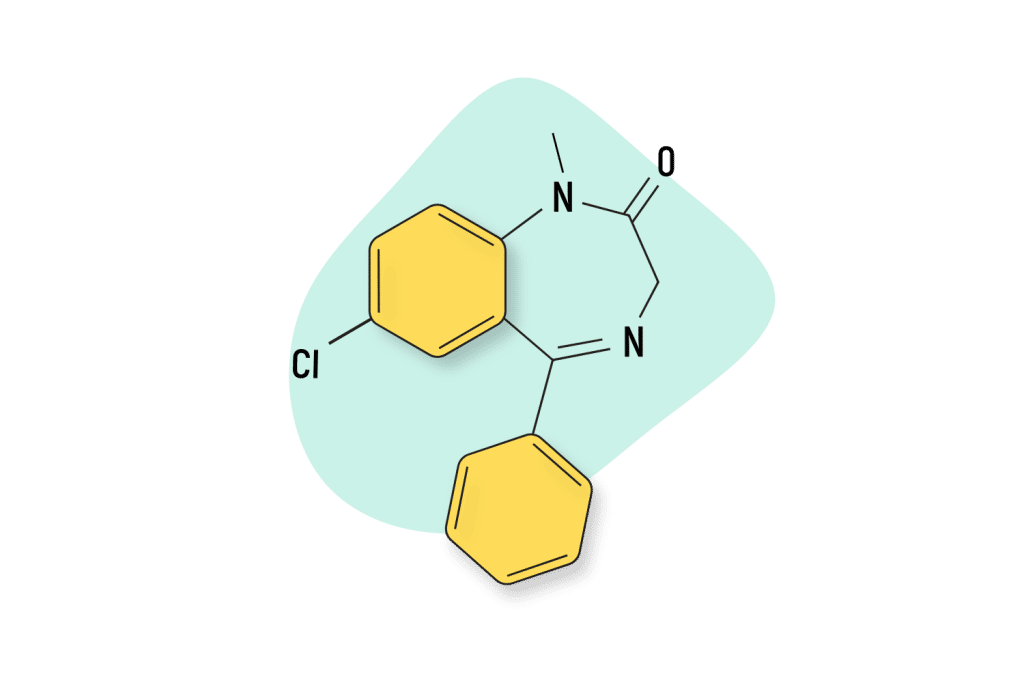
Nimetazepam (Lavol)
Nimetazepam (Erimin and Lavol) is structurally similar to nitrazepam, a precursor compound to flunitrazepam. The major difference is the addition of a methyl group in position one of the molecule. As such, the effects of nimetazepam are known to be similar to that of nitrazepam analogs, such as flunitrazepam.
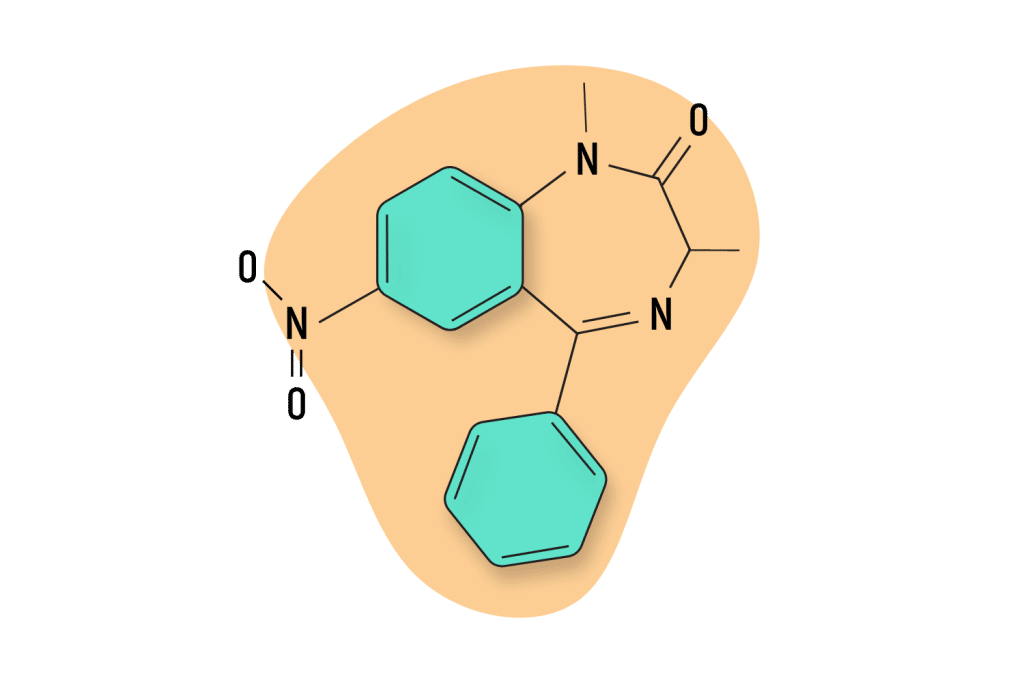
Nitrazepam
Flunitrazepam is a derivative of nitrazepam and thus shares key structural, as well as pharmacological, similarities. Both compounds have comparable elimination half-lives and share an affinity for the same GABA-A receptor subunits. However, there are key differences between them. For instance, flunitrazepam is a much more potent compound.
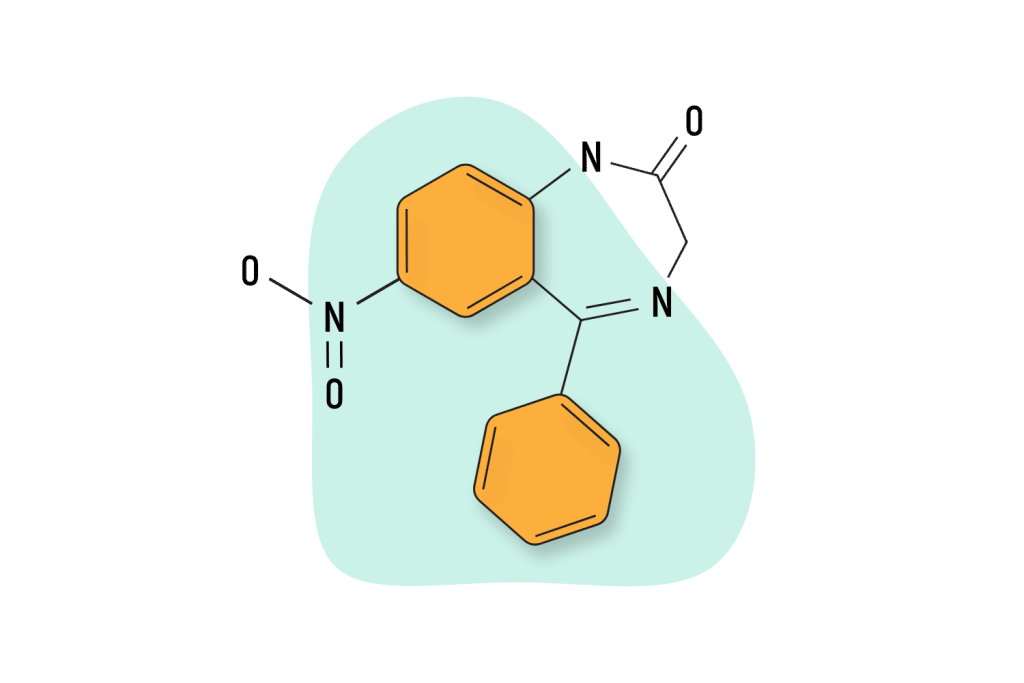
Nifoxipam
There are not a lot of peer-reviewed studies pertaining to nifoxipam, but it is generally held that this compound has a comparable pharmacological profile to both lormetazepam and flunitrazepam. Additionally, nifoxipam is one of the minor metabolic byproducts of flunitrazepam.
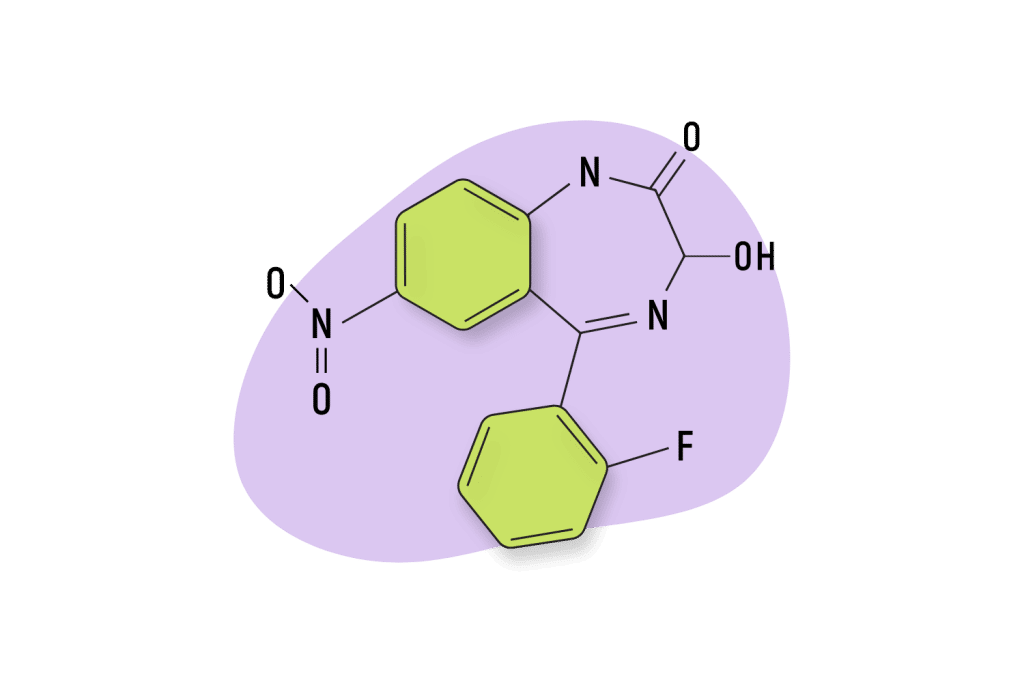
Flunitrazolam
Flunitrazolam is the triazole analog of flunitrazepam, which naturally means there is a fair degree of pharmacological convergence between the two compounds. However, the addition of a triazole ring for flunitrazolam means that this compound is of higher potency.
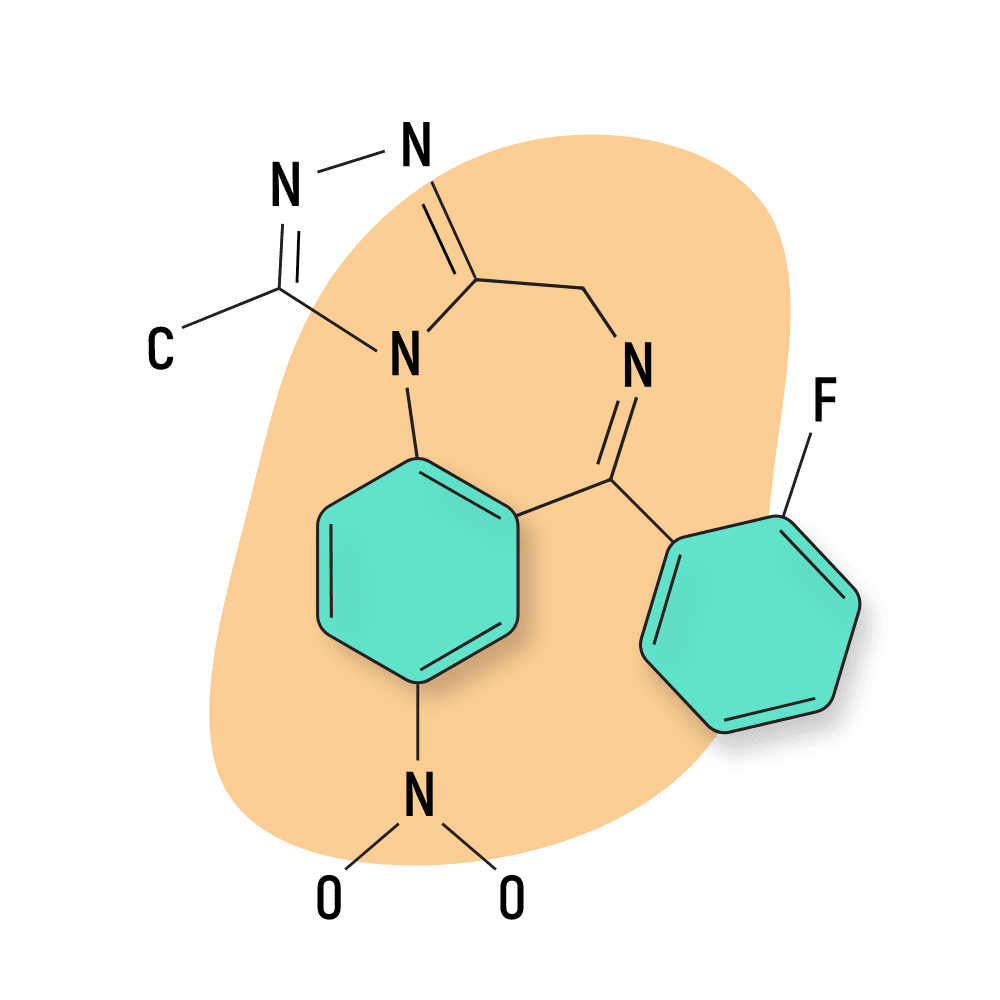
Natural Alternatives to Benzodiazepines
For those looking to try a natural alternative to benzodiazepines, the kava plant (Piper methysticum) is an excellent choice. Recent research has demonstrated that the kavalactones found in the plant have certain benzodiazepine-like effects.
These compounds similarly bind to GABA-A receptors and produce comparable, though less potent, anxiolytic effects [9]. Because of this, the kava plant has a storied use as a traditional medication with certain indigenous peoples. Additionally, the kava plant is far less likely to result in dependency, and the WHO has even come out in favor of it because of its benign side effects profile.

Flunitrazepam FAQs
Does Flunitrazepam Create Any Pharmacologically Active Byproducts?
Flunitrazepam is extensively metabolized in the liver to its major metabolites N-desmethylflunitrazepam, which has some intrinsic activity, and 7-aminoflunitrazepam, which is inactive. It also produces nifoxipam (3-hydroxydesmethylflunitrazepam), which is pharmacologically active.
What Are Flunitrazepam’s Indications?
Outside of the United States, flunitrazepam is used to treat insomnia and as an oral premedication before surgery.
Is Flunitrazepam Available in the United States?
No. Flunitrazepam is no longer manufactured or available for sale within the United States.
References
- Benkert, O., Anghelescu, I., Fehr, C., Gründer, G., Heiser, P., Hiemke, C., … & Steiger, A. (2010). Flunitrazepam. In Pocket Guide Psychopharmaka von A bis Z (pp. 87-88). Springer, Berlin, Heidelberg.
- Mattila, M. A. K., & Larni, H. M. (1980). Flunitrazepam: a review of its pharmacological properties and therapeutic use. Drugs, 20(5), 353-374.
- Vgontzas, A. N., Kales, A., & Bixler, E. O. (1995). Benzodiazepine side effects: role of pharmacokinetics and pharmacodynamics. Pharmacology, 51(4), 205-223.
- Sur, C., Fresu, L., Howell, O., McKernan, R. M., & Atack, J. R. (1999). Autoradiographic localization of α5 subunit-containing GABAA receptors in rat brain. Brain Research, 822(1-2), 265-270.
- Simmons, M. M., & Cupp, M. J. (1998). Use and abuse of flunitrazepam. Annals of Pharmacotherapy, 32(1), 117-119.
- Substance Abuse and Mental Health Services Administration (US); Office of the Surgeon General (US). Facing Addiction in America: The Surgeon General’s Report on Alcohol, Drugs, and Health [Internet]. Washington (DC): US Department of Health and Human Services; 2016 Nov. [Table], Rohypnol® (Flunitrazepam)
- Riss, J., Cloyd, J., Gates, J., & Collins, S. (2008). Benzodiazepines in epilepsy: pharmacology and pharmacokinetics. Acta neurologica scandinavica, 118(2), 69-86.
- Kilicarslan, T., Haining, R. L., Rettie, A. E., Busto, U., Tyndale, R. F., & Sellers, E. M. (2001). Flunitrazepam metabolism by cytochrome P450s 2C19 and 3A4. Drug metabolism and disposition, 29(4), 460-465.
- Sarris, J., Stough, C., Bousman, C. A., Wahid, Z. T., Murray, G., Teschke, R., … & Schweitzer, I. (2013). Kava in the treatment of generalized anxiety disorder: a double-blind, randomized, placebo-controlled study. Journal of clinical psychopharmacology, 33(5), 643-648.

